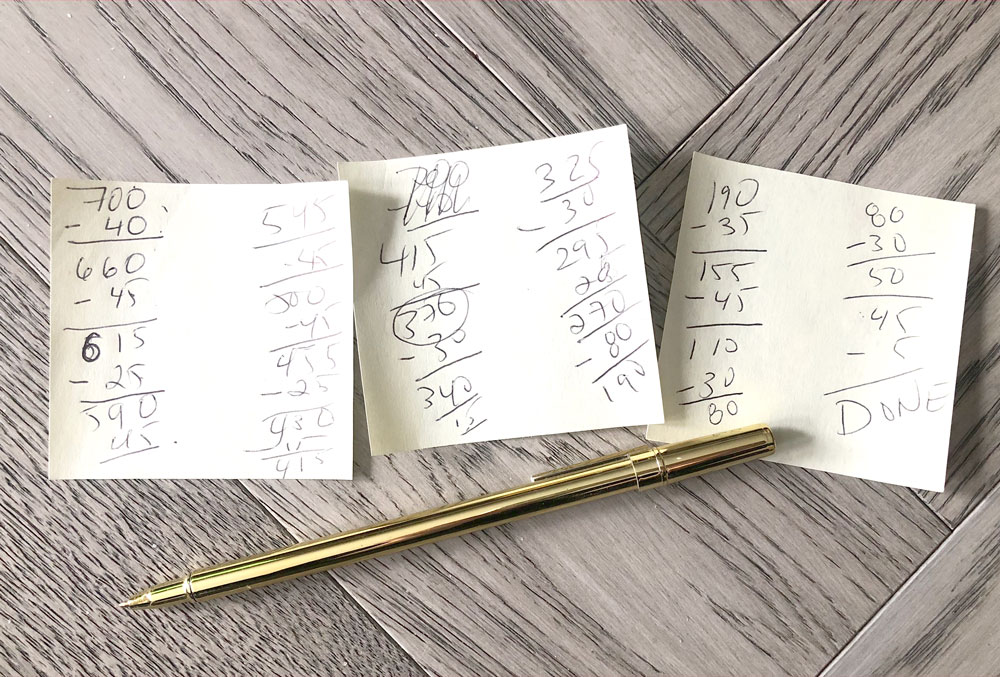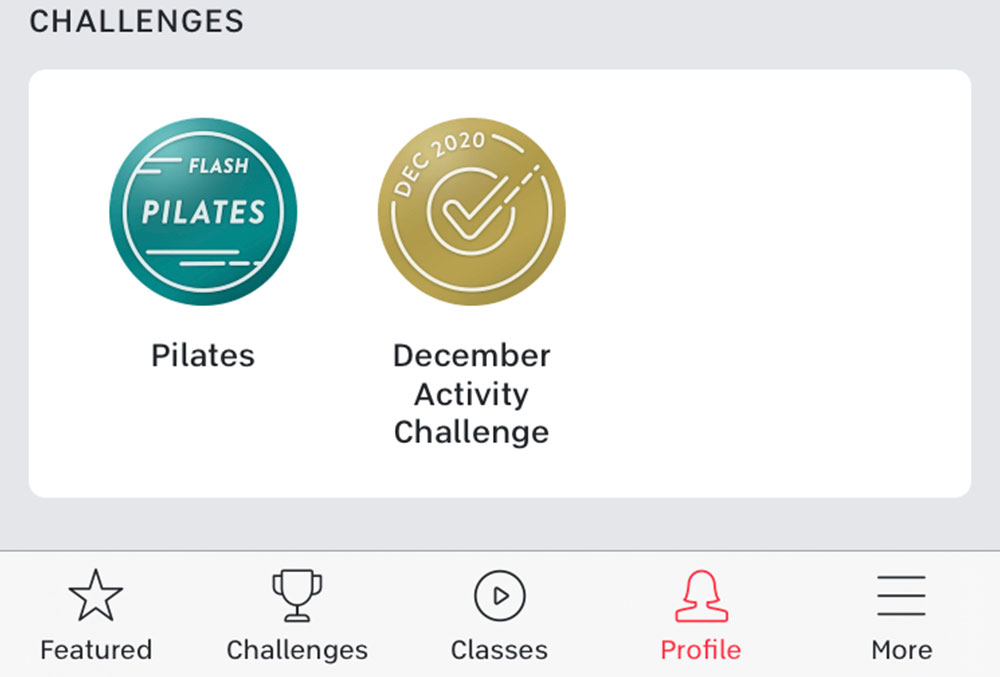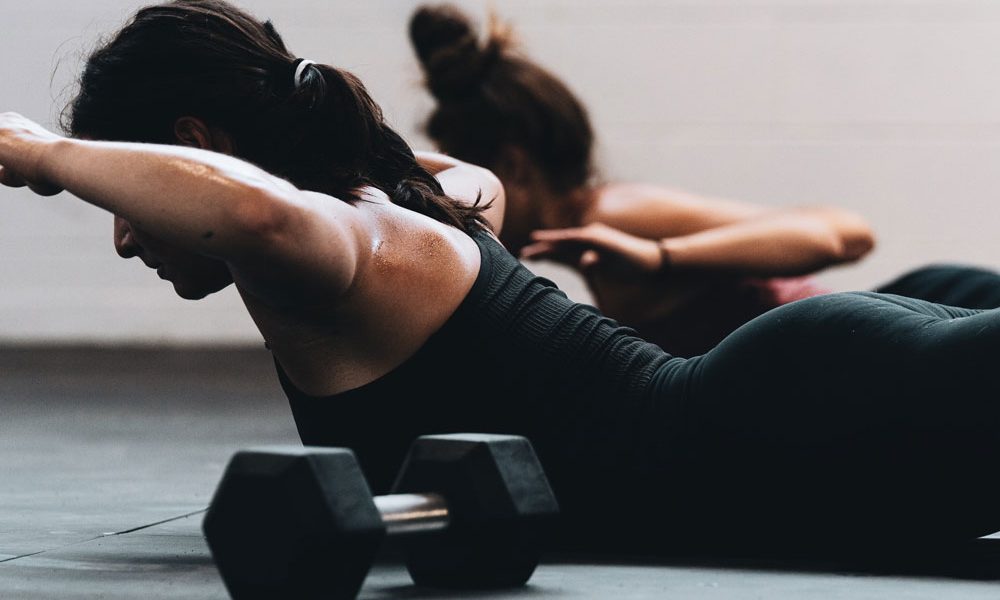This Pilates challenge review is part of our Good Sport series. We’re up for any challenge (physical or mental) and this is where we prove it – and then convince you to do the same! Daily burpees anyone?
A Pilates challenge? Sign me up. I usually do Pilates once a week, typically on a Saturday. I’ve noticed more and more trainers C-curving, dorsiflexing and foot-walking Pilates moves into their workouts. It would make Joseph Pilates (the inventor of Pilates) proud. So I had been wondering if I should be doing this core-targeted workout more often. When a friend signed herself up for the United Way Get Up virtual physical challenge, which lets you choose your workout poison, I immediately joined her team and chose Pilates for the two-week challenge.
I even got to pick out the goal: 700 minutes, which works out to be 50 minutes a day. Seemed reasonable enough. I signed up for Body Barre’s virtual gym (two to three live workouts daily on their Facebook page, with Pilates mat classes, as well as Pilates-based HIIT and yoga classes), subscribed to Pilates instructor Frank Zito’s YouTube channel, and saved some Peloton Pilates classes.
Here’s what it was like to do the Pilates challenge, how I’m feeling now that it’s done (hint: I miss it!) and a Pilates trainer’s insight on what was happening with my body.
Day 1: Starting my Pilates challenge didn’t seem like that much of a challenge
I did a Body Barre class (originally it was posted live but I did it later in the day) taught by Tina Di Leo, the owner and trainer of the Vaughan studio. It was the perfect transition into a Pilates challenge, as her programs are a fusion of Pilates and strength, using light to medium weights, as well as straight mat and reformer classes. I don’t have a reformer at home (who does?), so this is a great advanced way to start off my Pilates challenge. Amid lunges, squat jumps, presses et al, we did squat jumps and pike walkouts on the mat, elevated push-ups on the wall (she used the TRX for the video to engage the core – who knew TRX-Pilates was a thing?), lunges, Spider-Man push-ups, plank variation sets, side crunches/teasers, glute kickouts, and so on. So you get the drift, even without it being one of the Pilates mat classes, there are a tons of Pilates moves in the Body Barre classes.
How did it feel? Pretty good. While at points I thought the repetitive, targeted moves felt like I was going to give up faster than Dry January, I didn’t feel exhausted. My heart rate was up, sure, but nothing crazy. I didn’t have to rest after. And usually after a workout (especially with squat jumps), I need a few minutes to recoup and get myself together. But I felt good. It was more like a pat on the back (especially with my abs engaged and tightened after) than a punch in the gut. The class was 40 minutes. To keep on track, I minused the minutes, so I had 660 minutes left.
Thinking about doing the 30-day burpees challenge? Read this first.
I miss my reformer – so I adapted my at-home Pilates workouts
I confess: I don’t love mat Pilates. The reformer is my real jam. But doing Pilates workouts at home really made me wish I had a reformer. I saw on Instagram that Studio Lagree was selling a Micro reformer. But I already had a home gym stacked with a new-ish Peloton bike and an old Bowflex TreadClimber, so with the price at $1,865 for the fully loaded Micro reformer I had to pass. Instead, Di Leo had recently installed the Peak Pilates Pilatesstick in her studio and was selling them too at $199. I snagged one. It’s essentially a toner that can be attached at the ends with a wooden bar or foot loops. (Now I’m craving Fruit Loops!) Essentially, you can use the stick in place of a reform when you would use the straps or the bar. I searched YouTube for videos, even ones from the makers of the stick, but they’re all pretty basic, TBH. But Frank Zito’s videos are great. They were advanced enough for me to feel the moves. They’re around 30 minutes each, but I would two; one after the other.
Frank Zito shows how to work your core with the Peak Pilates Pilatesstick.
Sometimes you get what you pay for with free Pilates workouts
Pilates is a good workout for everyone, and that means the range of fitness levels can be hard to determine until you’re in the thick of the workout. Pilates-branded workouts, like Peak and Stott, were a bit too basic for me. So, I ended up sticking with Frank Zito, but I also discovered the Goop-approved Kit Rich. I stuck with her mat workouts and slipped my feet in the Pilatesstick loops for leg and arm work and use the bar for roll-ups, extensions and of course the hundreds.
At this point in my challenge, Peloton didn’t have “Pilates” classes as a category, but this Reddit link included some good ones, which I did as workout finishers to burn some more minutes off my Pilates challenge. But mostly I found the Body Barre workouts to be the most challenging and the most rewarding.
Thinking about trying the Peloton barre class collection? Here is our honest review.

Pilates challenge results: How did it change my body?
By the end of the two weeks, not only was I proud of myself for finally trying to commit to Pilates, I felt pretty hot (not a sentence I typically throw around about myself). I felt taller, leaner and toned. And my stomach seemed flatter. I didn’t lose weight, as the number didn’t budge on the scale. But working from home during the pandemic means I’m slouched over on a less than ideal home office chair or sunken into the unstructured cushions of my couch.
“That’s the whole point of Pilates; it’s meant to lengthen and strengthen at the same time,” says Di Leo. “Most people after doing Pilates will say that they feel tighter, longer and stronger in their centre.” And my COVID-bloat might have more a posture issue, and less about weight gain, that Pilates seemingly fixed, suggests Di Leo. “The longer you slouch and sit without support, the more your muscles will take on that ‘slouched’ shape.”
The back-to-back workout days had me feeling the tension in every tiny muscle through my arms, down my ribs, along my core and behind the belly button, down my legs and even around my knees. I imagined that this is how fit people feel every day. Even Di Leo noticed my form in a reformer class (pre-lockdown of course).
Peloton launched its Pilates classes right when my challenge finished, and I signed up for another two-week Pilates challenge. My two-week charity effort instantly turned into a 30-day Pilates challenge just like that!

I finished a month-long Pilates challenge, now what?
Despite feeling stronger and fitter, my first strength-cardio interval workout after was killer. I was out of breath and exhausted. I couldn’t figure it out. But Di Leo explains it:
“Pilates balances out strength with flexibility and mobility, especially with the spine,” says Di Leo, adding that other forms of fitness tend to focus on one, like many body building programs for gaining strength without flexibility, or some yoga programs that only focus on mobility and flexility. (Evidence: The fittest guy you know who can’t touch his toes.) That’s likely why more and more workouts are now including Pilates-based moves.
“Pilates is a low-impact form of fitness,” she says, adding that it’s not a calorie burn, so I didn’t lose weight. “You will definitely sweat, but it’s not the same as running or doing a spin class.” She recommends training like you eat: Go for balance and variety. Make sure you’re lifting weights for strength, doing functional fitness moves, getting in your cardio, and do Pilates at least once a week for restorative fitness as well as toning. (She does say, though, that you can do Pilates every day, too, especially if you’re new to fitness and working out.) “Pilates is a feel-good form of strength training.”
While I initially thought I’d do this challenge again, and again and again until it became my lifestyle, I feel I now understand the role of Pilates in a varied and balanced fitness program. And to me that means at least one of my workouts each week is Pilates-focused.
This is the hardest class on the Peloton app – we swear our sweat on it.

